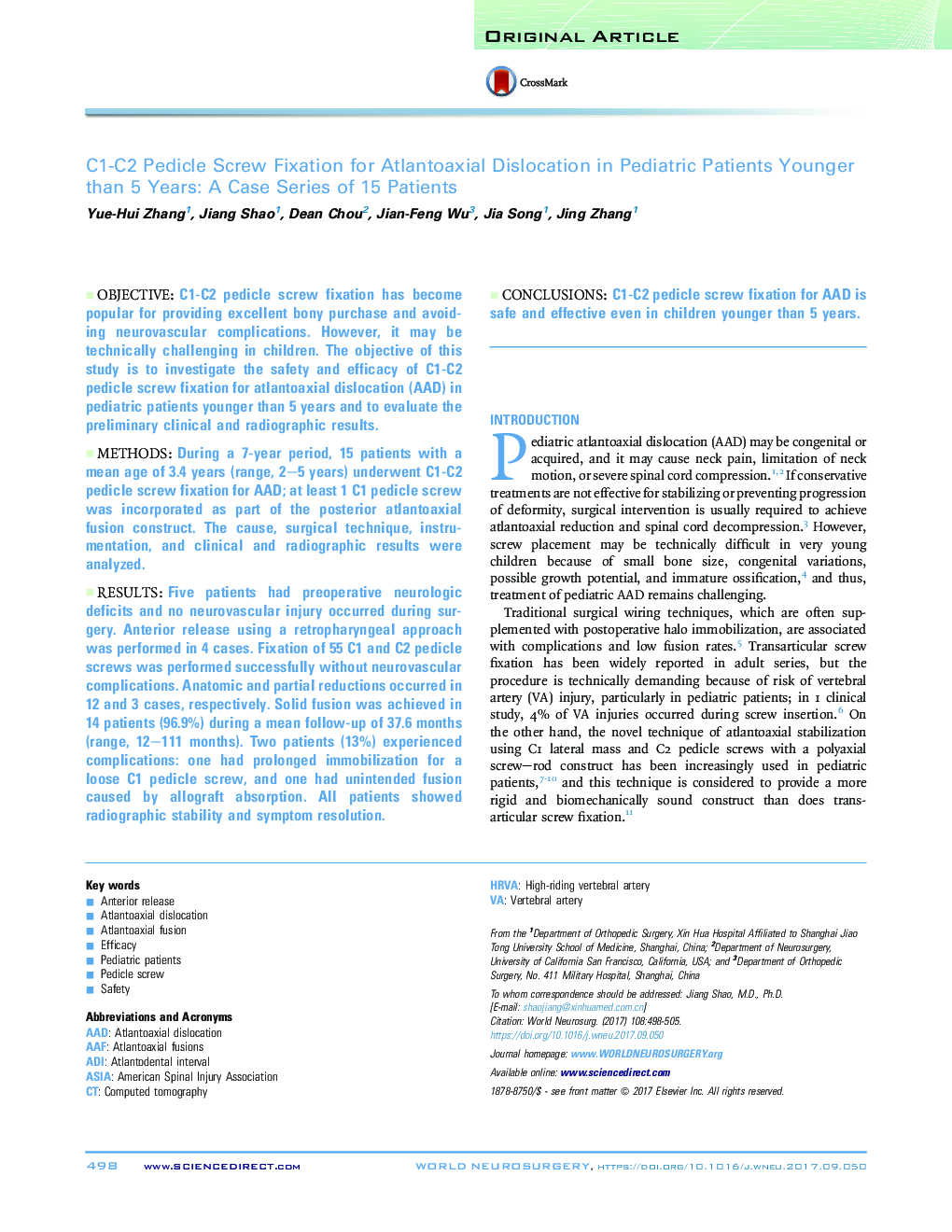| Article ID | Journal | Published Year | Pages | File Type |
|---|---|---|---|---|
| 5633798 | World Neurosurgery | 2017 | 8 Pages |
ObjectiveC1-C2 pedicle screw fixation has become popular for providing excellent bony purchase and avoiding neurovascular complications. However, it may be technically challenging in children. The objective of this study is to investigate the safety and efficacy of C1-C2 pedicle screw fixation for atlantoaxial dislocation (AAD) in pediatric patients younger than 5 years and to evaluate the preliminary clinical and radiographic results.MethodsDuring a 7-year period, 15 patients with a mean age of 3.4 years (range, 2-5 years) underwent C1-C2 pedicle screw fixation for AAD; at least 1 C1 pedicle screw was incorporated as part of the posterior atlantoaxial fusion construct. The cause, surgical technique, instrumentation, and clinical and radiographic results were analyzed.ResultsFive patients had preoperative neurologic deficits and no neurovascular injury occurred during surgery. Anterior release using a retropharyngeal approach was performed in 4 cases. Fixation of 55 C1 and C2 pedicle screws was performed successfully without neurovascular complications. Anatomic and partial reductions occurred in 12 and 3 cases, respectively. Solid fusion was achieved in 14 patients (96.9%) during a mean follow-up of 37.6 months (range, 12-111 months). Two patients (13%) experienced complications: one had prolonged immobilization for a loose C1 pedicle screw, and one had unintended fusion caused by allograft absorption. All patients showed radiographic stability and symptom resolution.ConclusionsC1-C2 pedicle screw fixation for AAD is safe and effective even in children younger than 5 years.
